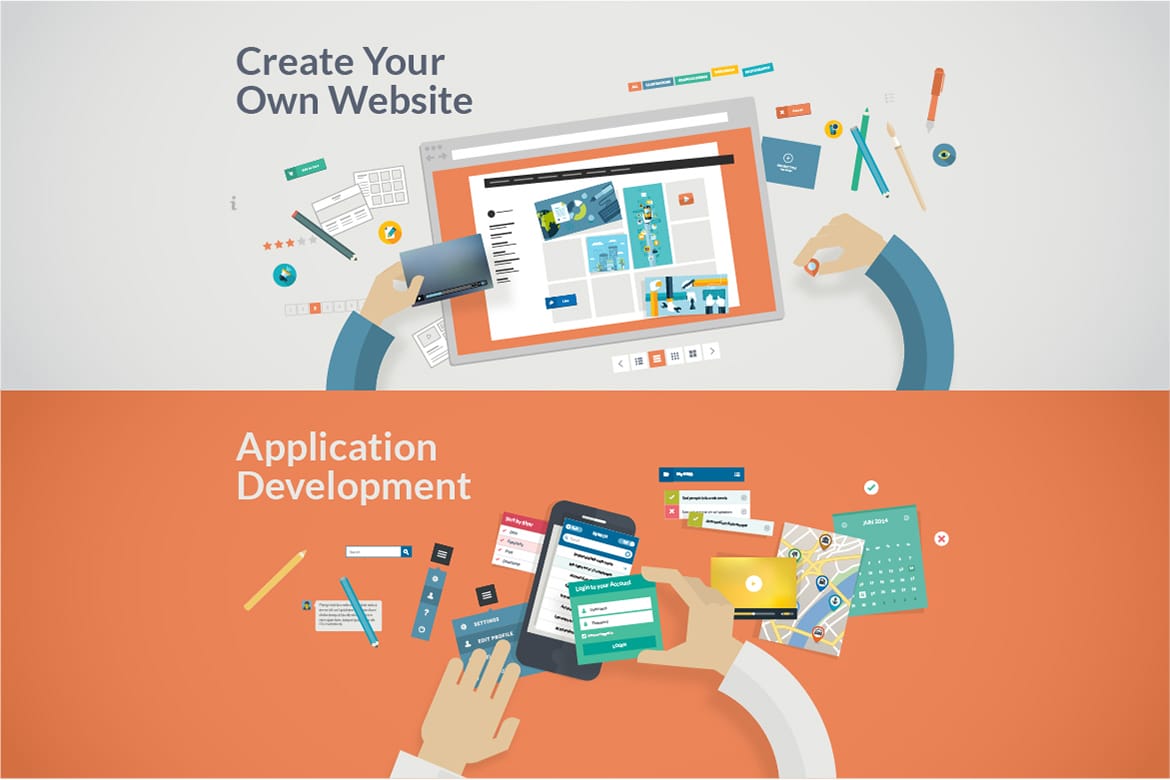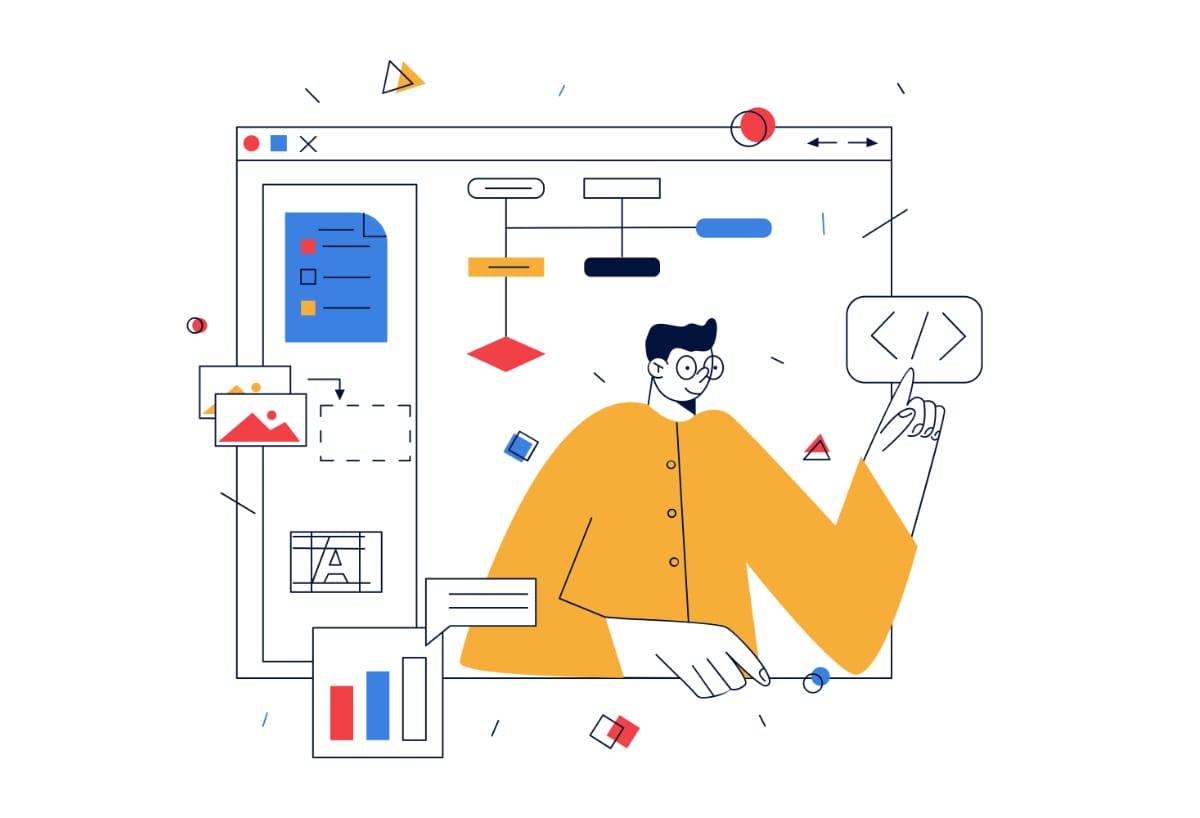What Are The Four Stages Of Web Design
by Christina

What Are The Four Stages Of Web Design
Creating a website isn't nearly as difficult as it was 10 plus years ago. Systems have been created so anyone can go into a website designing tool and create a website without having to understand or know how to program or design.
If you aren't a web designer and have no SEO experience, you won't have what it takes to get the very best results from a website, but there are a few steps you can take to try and make a good go of it on your own.
To get the best results, you will need to plan out each stage of your website design to ensure you include everything that needs to be seen on your website, as well as how you want it to look and work. Web designers/developers break the process down into stages. This helps to keep things organised and allows the work to flow in an ordered manner.
Here are the stages we will be covering:
- Planning
- Design
- Development
- Launch and maintenance
The Four Stages of Web Design
Web design is the process of creating a website. It involves planning, designing, developing, and launching a website.

1. Planning
The planning stage is where you define the purpose of your website, your target audience, and your overall goals. You will also need to do some research on your competitors and the latest web design trends.
In this stage you need to work through these steps:
- Define the purpose of your website
- Who are your target audience
- What is your goal
- What are your competition doing
- Latest website trends
- Select and register your domain
- Choose your hosting provider
- Pick a website-building tool or platform

2. Design
The design stage is where you create the visual look and feel of your website. This includes the layout, colours, fonts, and images. Web designers usually create wireframes, which are low-fidelity sketches of website pages.
Wireframes
Wireframes are used to plan the layout and structure of a website before the visual design is created. Wireframes are typically made using simple shapes and lines, and they do not include any colours, fonts, or images.
Wireframes are an important part of the web design process because they allow a designer to:
- Plan the layout of a website: Wireframes can help designers to visualise how the different elements of a website will be arranged on the page. This can help them to ensure that the website is easy to navigate and that the content is easy to read.
- Identify potential usability issues: Wireframes can help a designer identify potential usability issues with a website. For example, if there is a lot of text on a single page, a wireframe can help a designer to see if the text is too small or if it is not broken up into manageable chunks.
- Get feedback from stakeholders: Wireframes can be used to get feedback from stakeholders, such as clients, developers, and other team members. This feedback can help a designer to improve the layout and structure of a website before the visual design is created.
Once the wireframes are finalised, they can be used as a starting point for the visual designer. The visual designer can use the wireframes to create a mock-up, which is a more detailed representation of the website's design.
Here are some of the benefits of using wireframes:
- They are quick and easy to create. Wireframes can be created using simple tools, such as pen and paper, or using online wireframing tools.
- They are a great way to communicate ideas. Wireframes can be used to communicate ideas to stakeholders, such as clients, developers, and other team members.
- They can help to identify usability issues. Wireframes can help to identify potential usability issues with a website. This can help to improve the user experience of the website.
If you are planning to create a website, I recommend that you use wireframes. Wireframes are a valuable tool that can help you to plan the layout and structure of your website, identify potential usability issues, and get feedback from customers.

3. Development
The development stage is where you bring your website design to life. This involves coding the website and adding all of the functionality. You will also need to test the website to make sure it is working properly.
Here are some additional tips for non-designers who are creating a website:
- Use a website builder or template. This can help you save time and money if you are not familiar with web design.
- Keep your website design simple. Too much clutter can be overwhelming and make it difficult for visitors to find what they are looking for.
- Use high-quality images and videos. Images and videos can help to break up the text on your website and make it more visually appealing.
- Use clear and concise navigation. Visitors should be able to easily find what they are looking for on your website.
- Test your website on different devices. Make sure your website looks good and functions properly on all devices, including desktop computers, laptops, tablets, and smartphones. You can use browsers to act like these devices using their developer responsive mode settings.

4. Launch and Maintenance
Once your website is launched, you need to maintain it. This includes updating the content, fixing any bugs, and monitoring the website's performance. You will also need to promote your website to attract visitors.
Web design can be a complex process, but it is important to follow the four main stages to create a successful website. By following these tips, you can create a website that is both visually appealing and functional.
The maintenance stage never ends, it is an on going process. You will always need to create fresh new up to date content, tweaking your SEO, and making sure your site is easy to navigate. Consider them weekly or monthly maintenance jobs. Whether your site is filled with written content, images, videos, or something else, you want to make sure you have plenty of content for viewers to enjoy from the moment your website launches. Regularly test your forms to ensure they work as expected.
SEO is also an on going task. This involves things like making sure your website tags are filled in properly, using proper linking strategies, having the right headings, keyword targeting, and much more. As Google and the other search engines are always modifying their algorithms, you want to make sure you are always keeping your SEO strategy up to date - this in turn keeps you up to date with changing customer moods and trends.
Finally, the navigation of your site. While you should have set up your initial menus in stage 1, you want to make sure your onsite linking is completed so visitors can find what they need easily. This includes setting up the various categories you are using and adding links within your content where applicable.
Of course, if you use a website designer/developer such as DRA, then you won't have to do any of these stages, we take care of it all for you.
Happy designing, and if you find you can't do it, we are always here to help.


